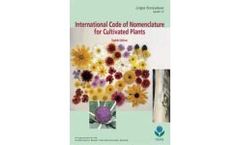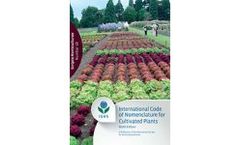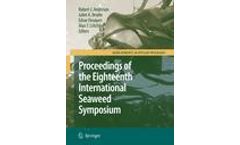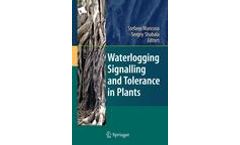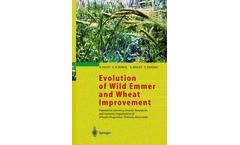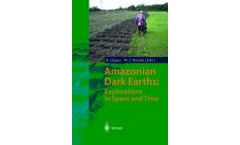Refine by
cultivator books
51 books found
Cultivated turfgrass is an assemblage of mown, perennial grasses or prostrate-growing forb plants and a suite of microbes all competing with each other in a common environment. ...
This eighth edition of the International Code of Nomenclature for Cultivated Plants (2009) replaces the seventh edition of the Code which was published in February 2004 as Acta Horticulturae Vol. 647 and as Regnum Vegetabile Vol. 144. The organisation of the Fifth International Symposium on the Taxonomy of Cultivated Plants held at Wageningen, The Netherlands ...
Migration is a global and ubiquitous phenomenon. A large percentage of our cultivated land in industrialized as well as in developing countries are covered with migrated or introduced plants. ...
It covers the extraordinary variety of economic uses of baobabs, famous trees, folk traditions and mythology, art associations, life cycle, natural history, cultivation, conservation, distribution and ecology, and phytogeography. ...
This book gives some practical approaches for saline agriculture and afforestation, and describes examples of cultivating salt-tolerant/halophytic plants ...
This ninth edition of the International Code for the Nomenclature for Cultivated Plants replaces the eighth edition of the Code which was published in October 2009 as Scripta Horticulturae Number 10 and as Regnum Vegetabile Vol. ...
Papers cover topics as diverse as systematics, ecology, commercial applications, carbohydrate chemistry and applications, harvesting biology, cultivation and more. Contributions from all parts of the world give the volume exceptional relevance in an increasingly global ...
Waterlogging is a major problem for plant cultivation in many regions of the world. This book combines both academic and practical aspects of this topic. ...
Symbiotic associations are of great importance in agriculture and forestry, especially in plant nutrition and plant cultivation. This book provides an up-to-date and lucid introduction to the subject. ...
A vital component of the subject is feeding the organisms under cultivation. This book provides a thorough review of the scientific basis and applied aspects of fish nutrition in a user-friendly format. ...
Elms occur, both naturally and cultivated, throughout much of the temperate world. Because of their high tolerance to extreme growing conditions and their widespread distribution, elms have been widely planted in cities, towns and rural areas throughout North America and northern Europe. ...
Wild emmer is the progenitor of most cultivated wheats and thus an important source of wheat improvement. This book draws the results from multidisciplinary studies on the ecological, genetic, genomic, agronomic, and evolutionary aspects of wild emmer, conducted at many labs around the world.It is divided into the following parts: Origin and Evolution of Wheat - Population ...
Soil enhancement practices by ancient Amerindians allowed them to intensively cultivate the land, without needing to continually clear new fields from forest. ...
Papers cover topics as diverse as the systematics, ecology, physiology, integrated multitrophic aquaculture, commercial applications, carbohydrate chemistry and applications, harvesting biology, cultivation of seaweeds and microalgae and more. Contributions from all parts of ...
As increasing global population and continuing economic development ensure the need for further production and cultivation of maize, the necessity of the application of transgenic technology to this model species and crop plant grows steadily. ...
Wastes considered include olive cultivation solid waste, wastes arising from classical, three- and two-phase olive mills and wastes generated during table olive processing. ...
Advances in plant cell molecular biology have considerably increased our understanding of pollen-pistil barriers, particularly those operated by incompatibility mechanisms, and, at the same time, demonstrated the complexity and diversity of rejection systems once considered to be relatively simple. This book reviews the impressive knowledge acquired in the last century on the biology, ...
The rate of creation of reactive nitrogen (NR) on the earth has dramatically increased in the last half century mainly due to the production of N-fertilizer through the Haber-Bosch process, fossil fuel combustion, and the cultivation of plants that fix N from the atmosphere. The anthropogenic production of NR has been especially high in developed countries of the temperate zone, ...
The production of nitrogen fertilizer, cultivation of legumes, and incidental nitrogen fixation in internal combustion engines together transfer more nitrogen from the atmosphere into biologically available forms than is fixed by all natural processes combined. ...
After presenting the major pests and diseases that affect greenhouse vegetable and ornamental crops, several chapters deal with the tools for designing and implementing IP&DM in protected cultivation with particular ...


